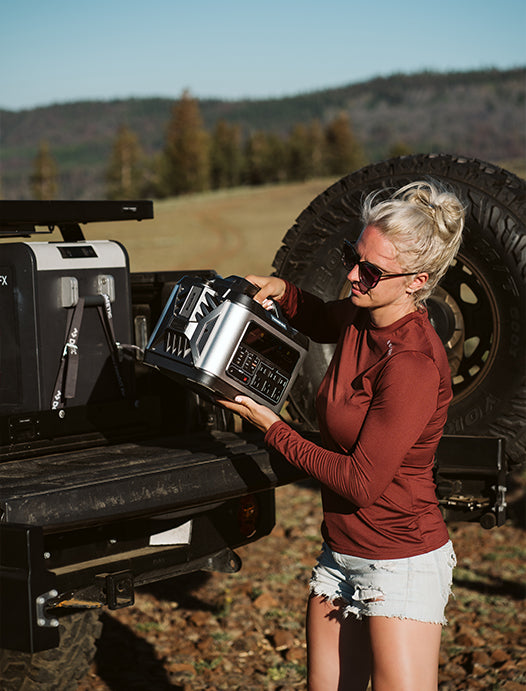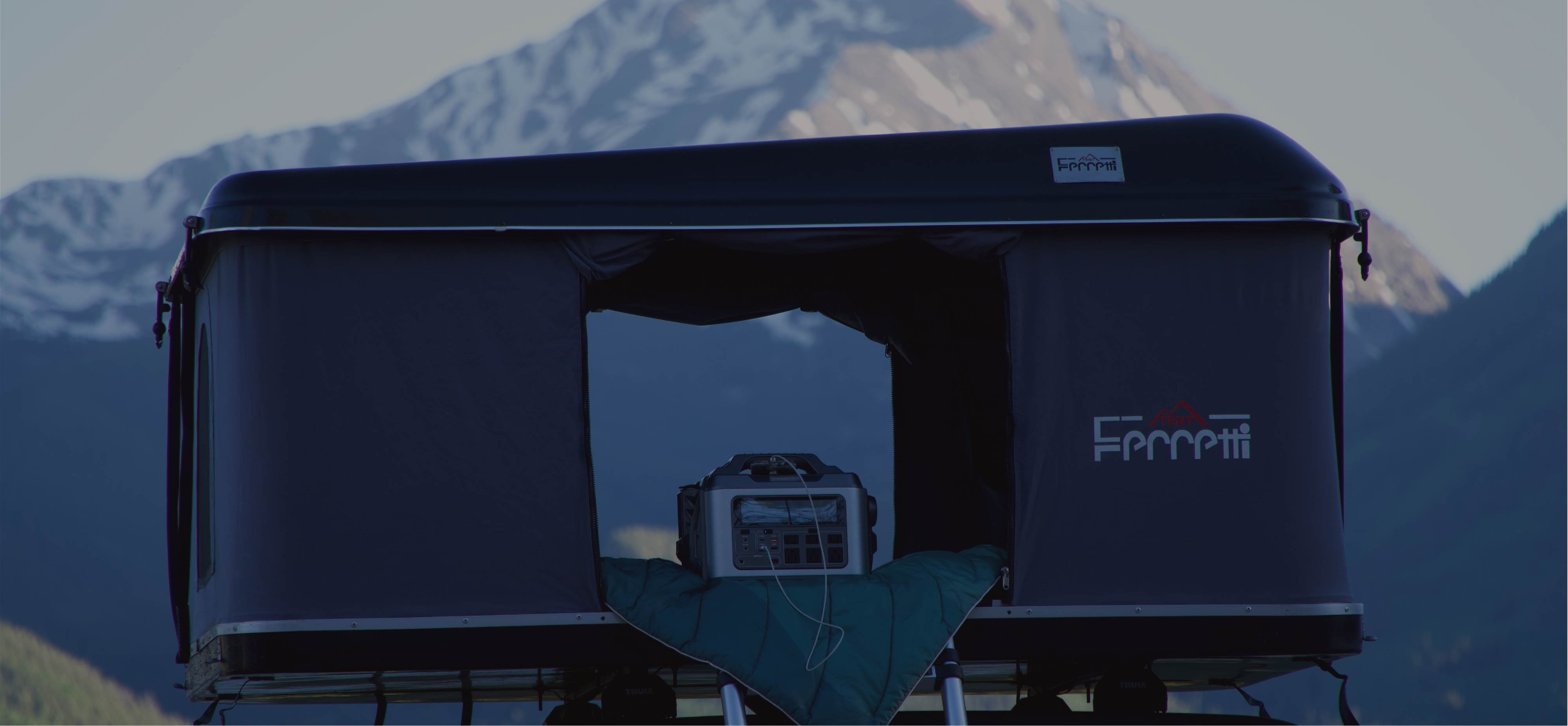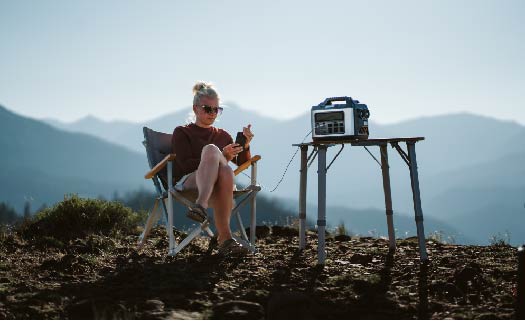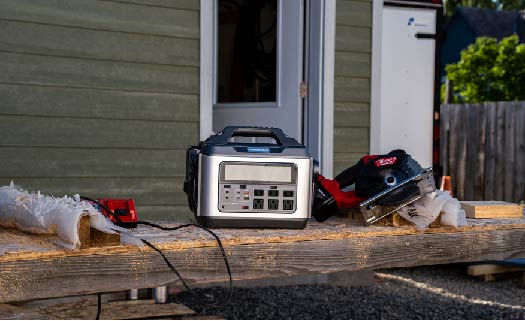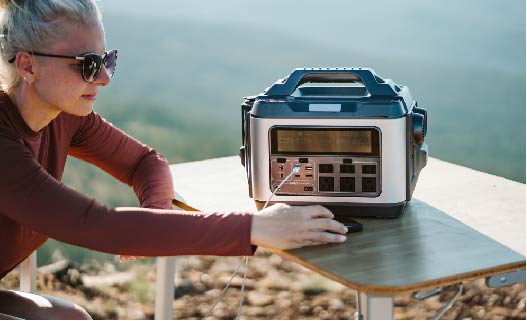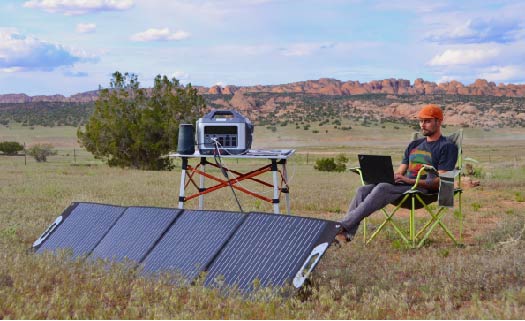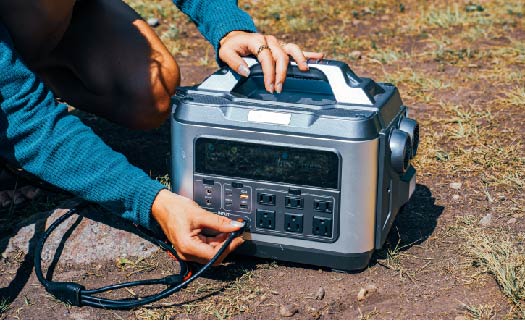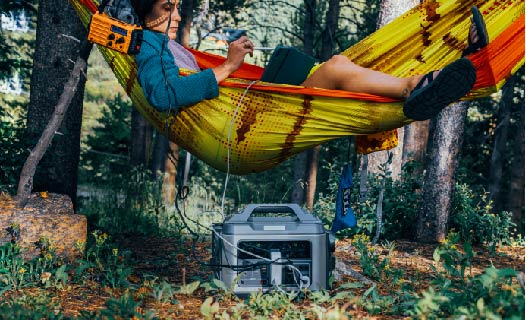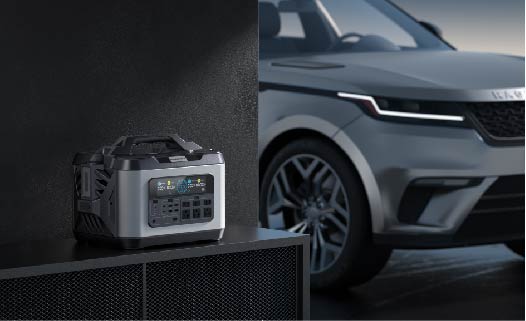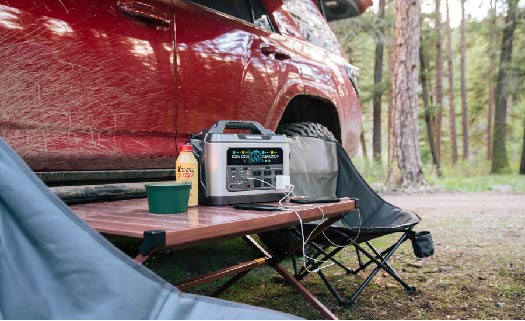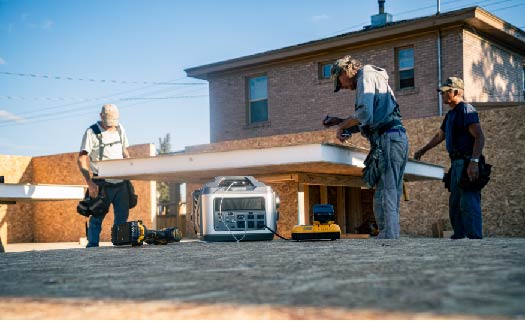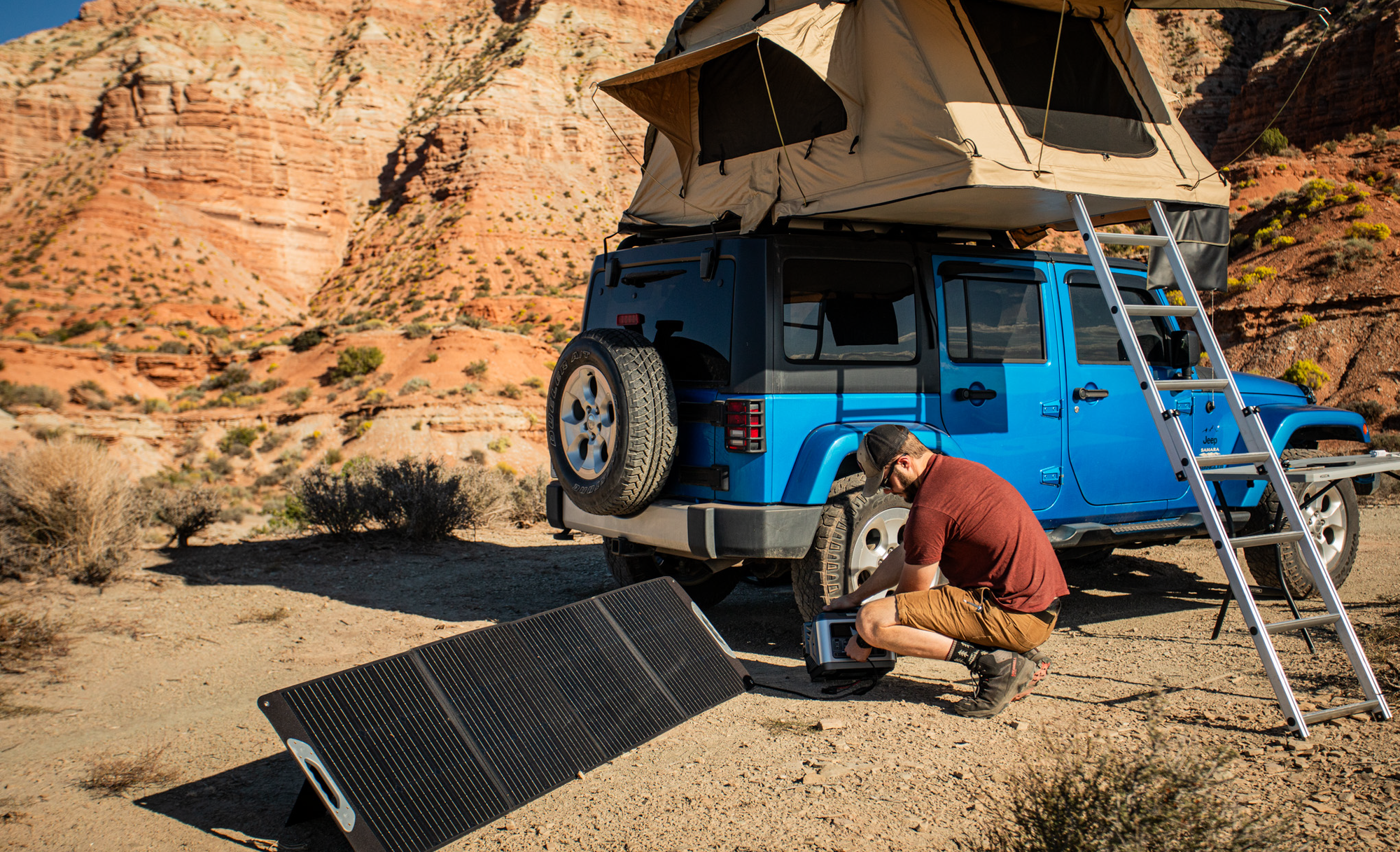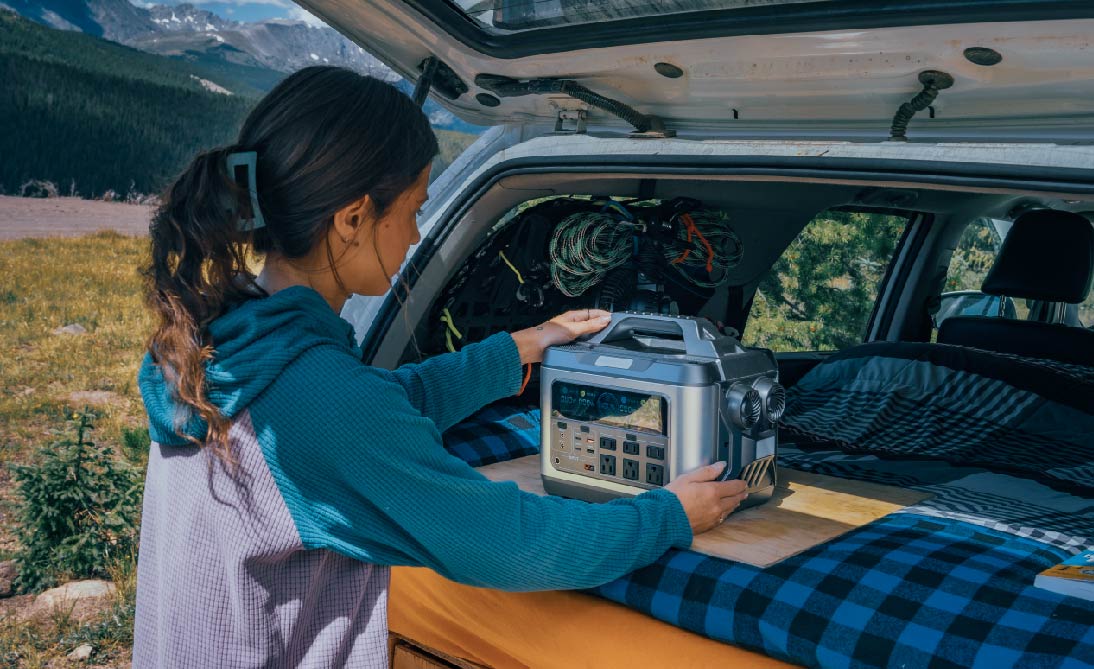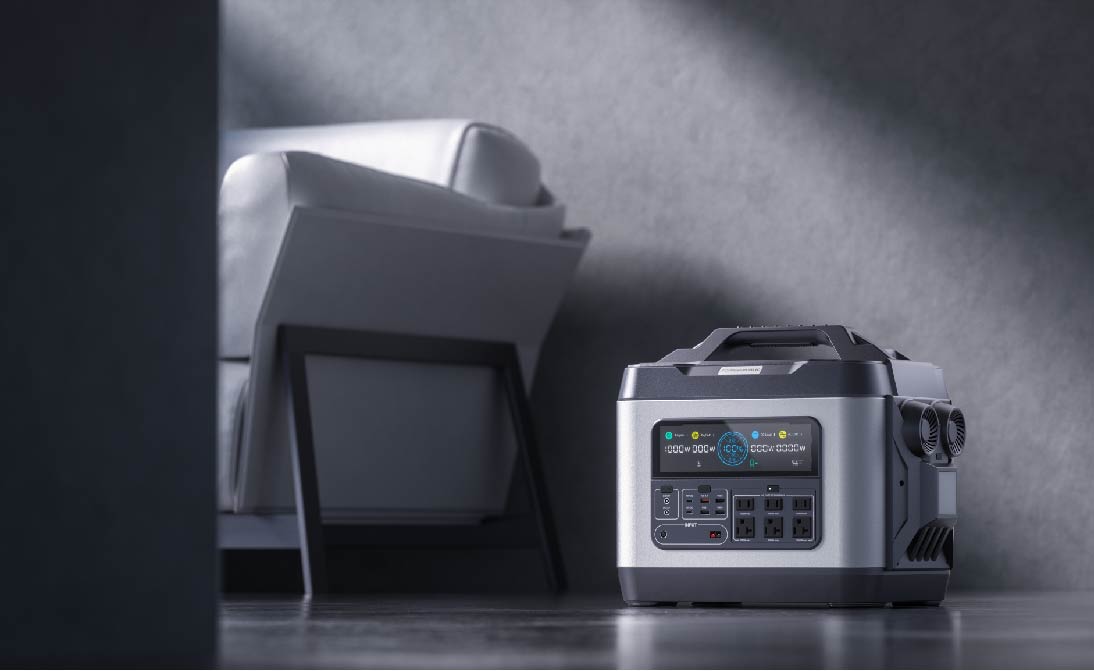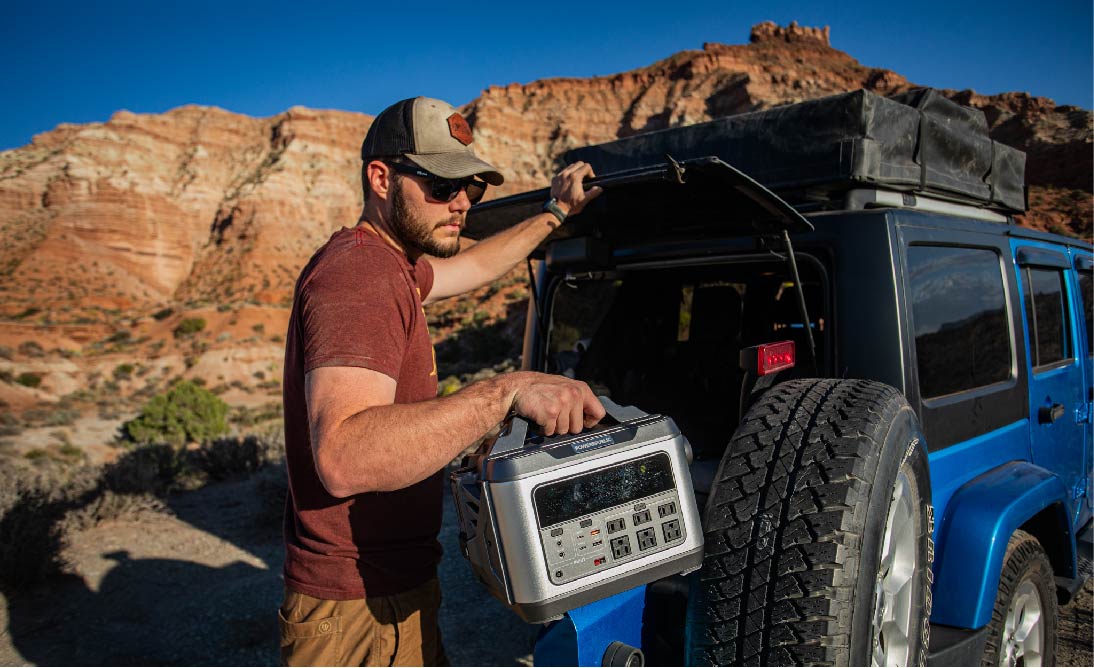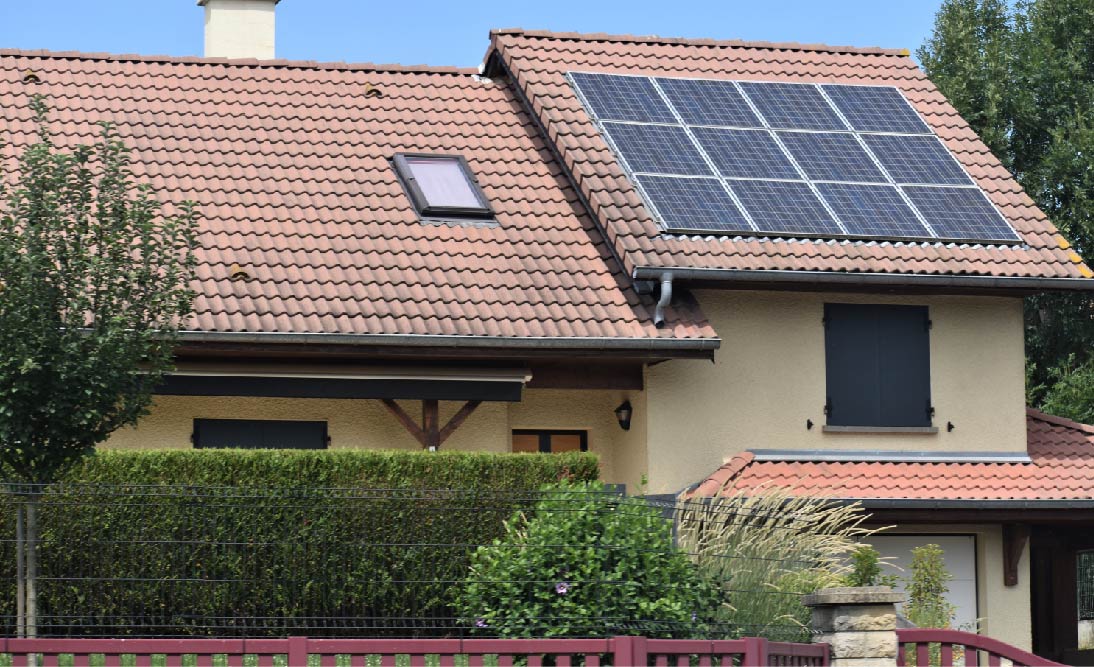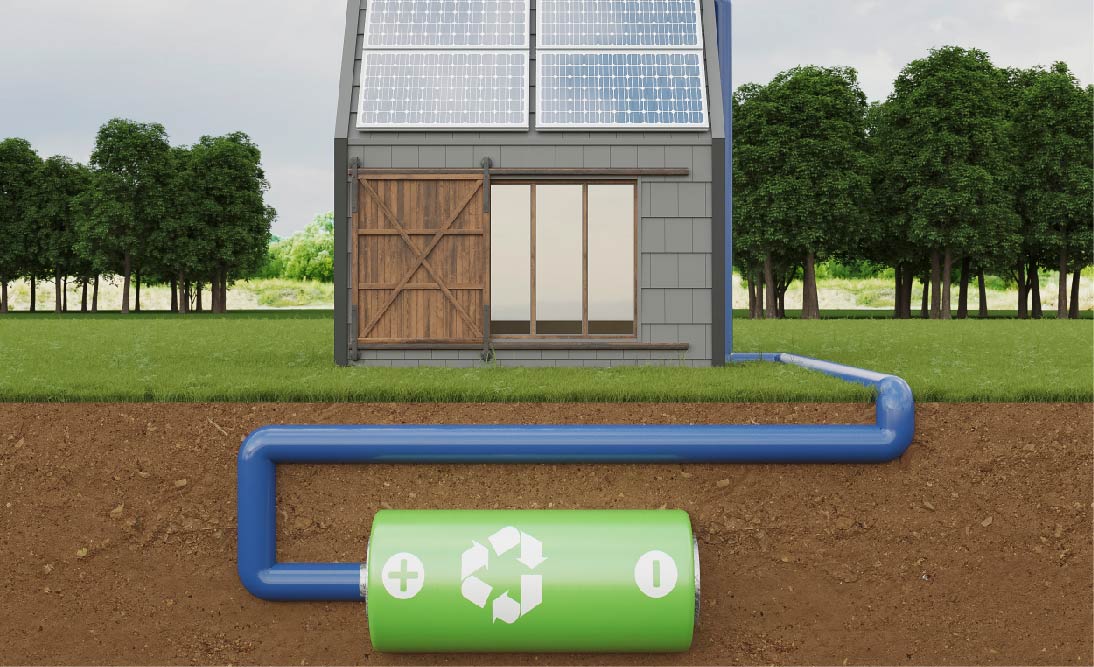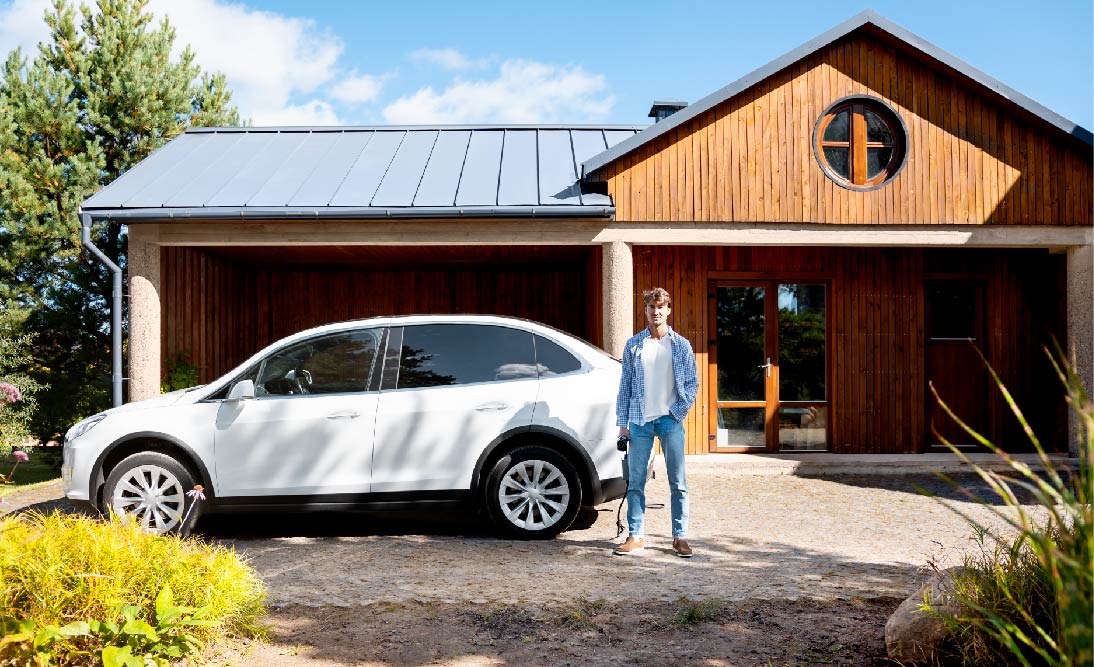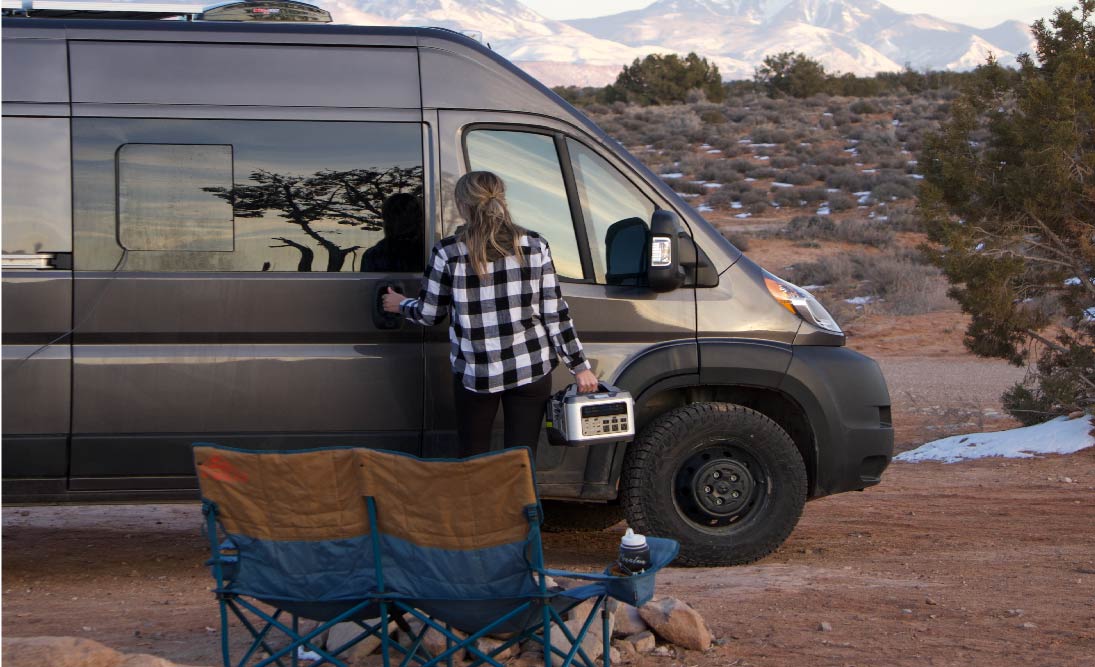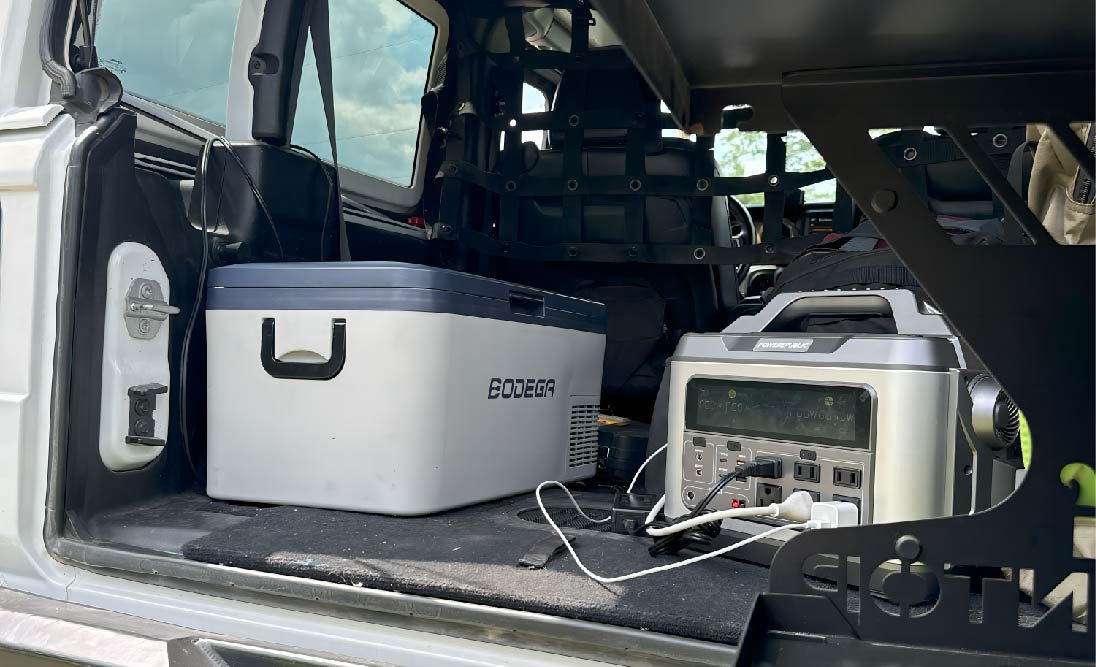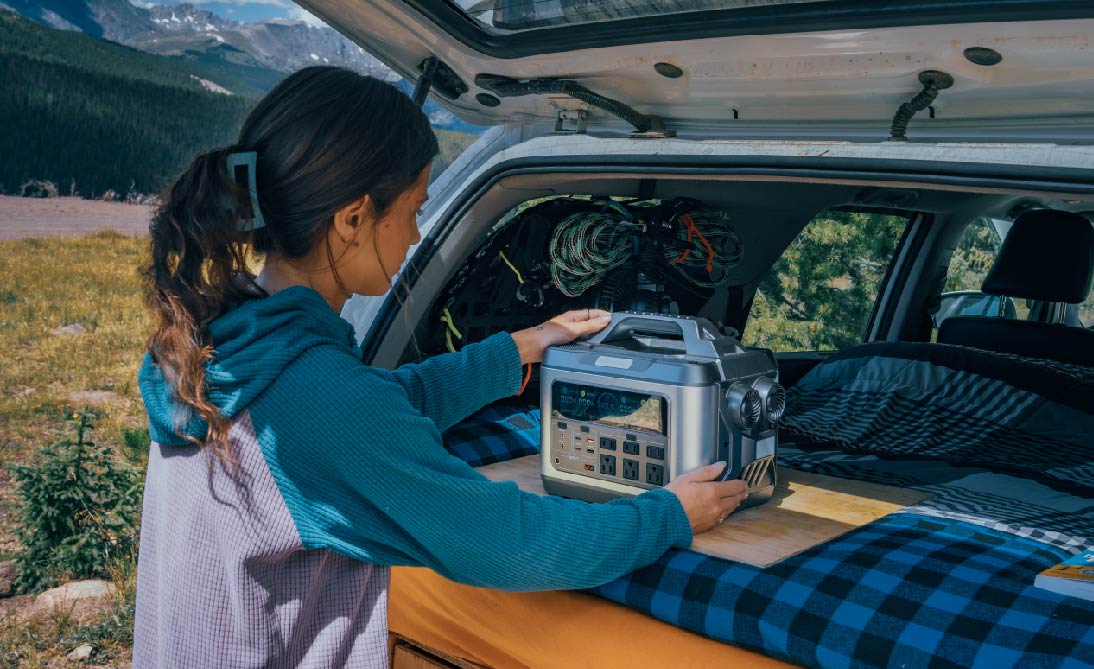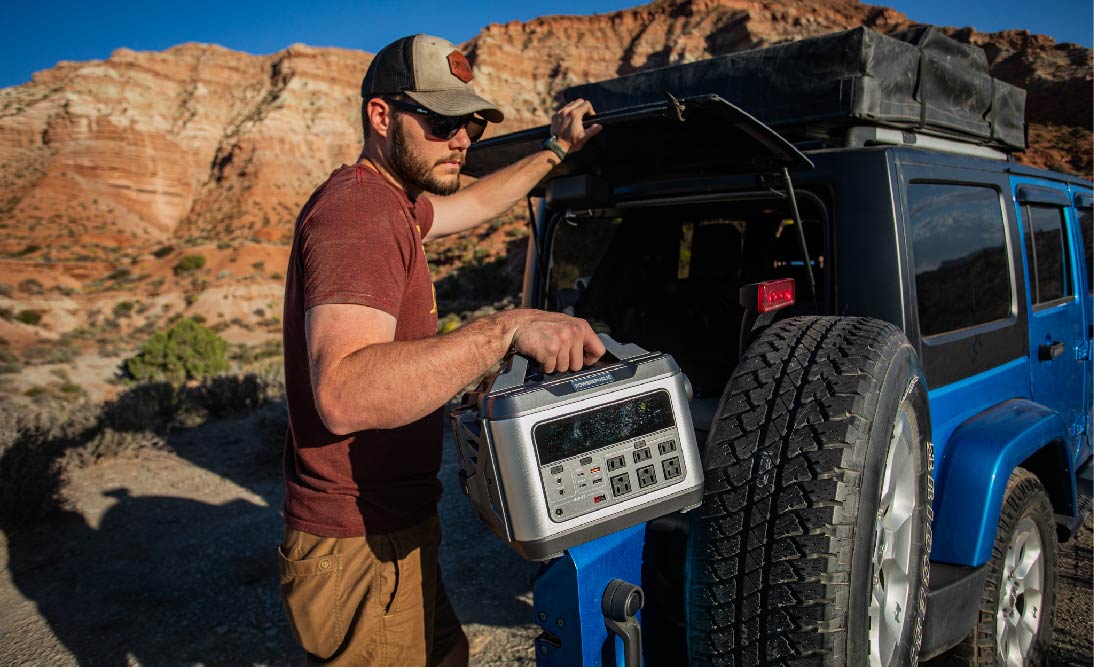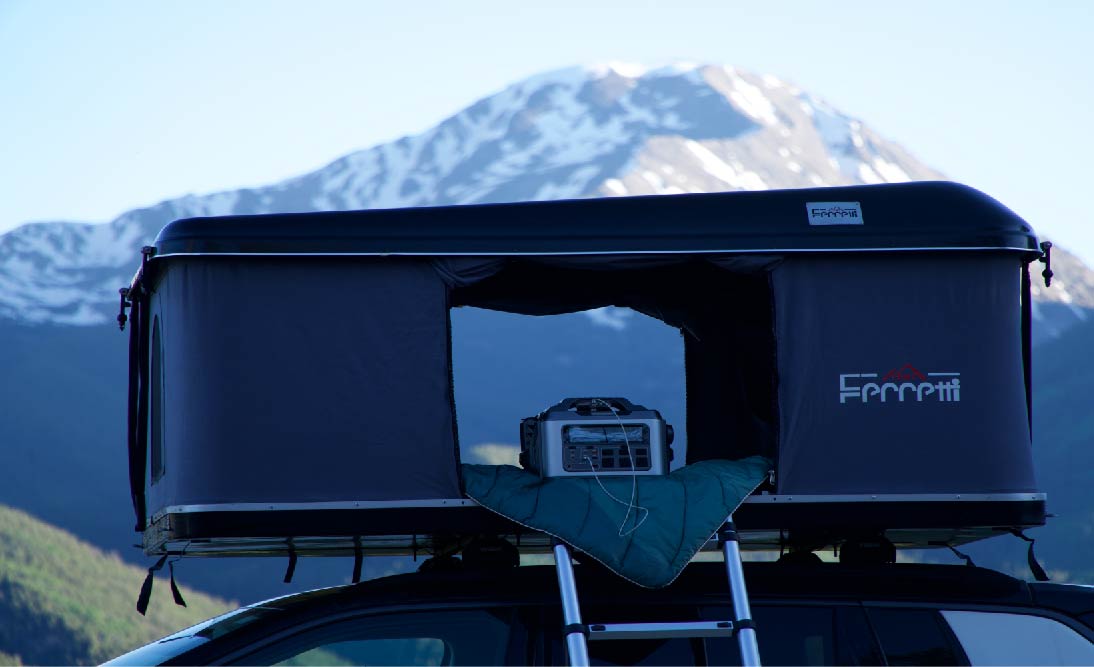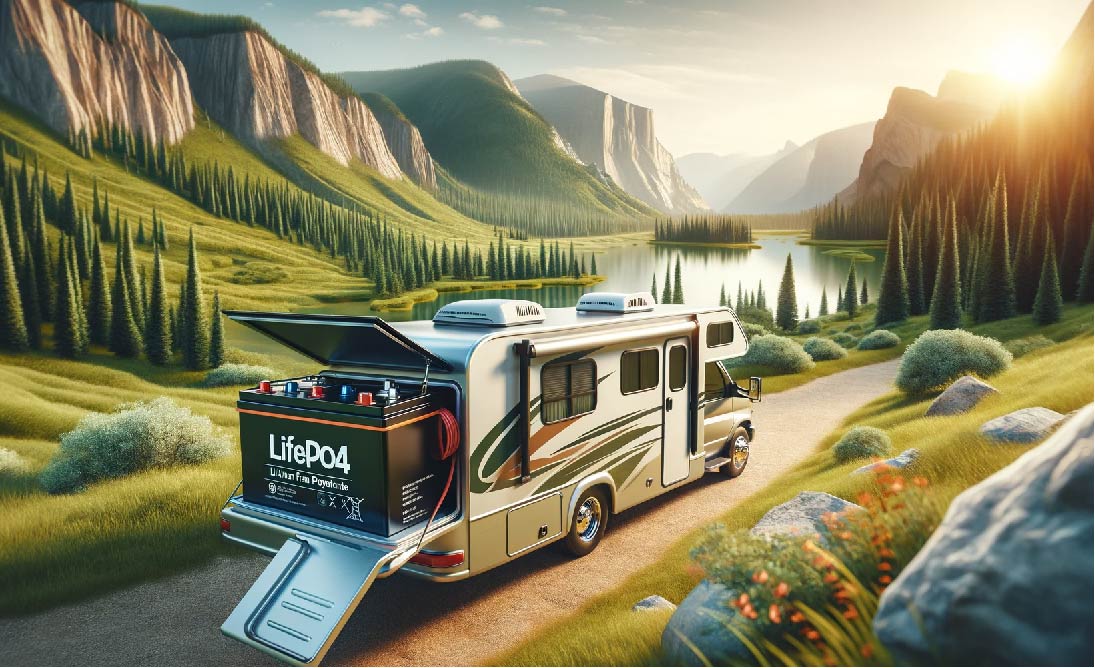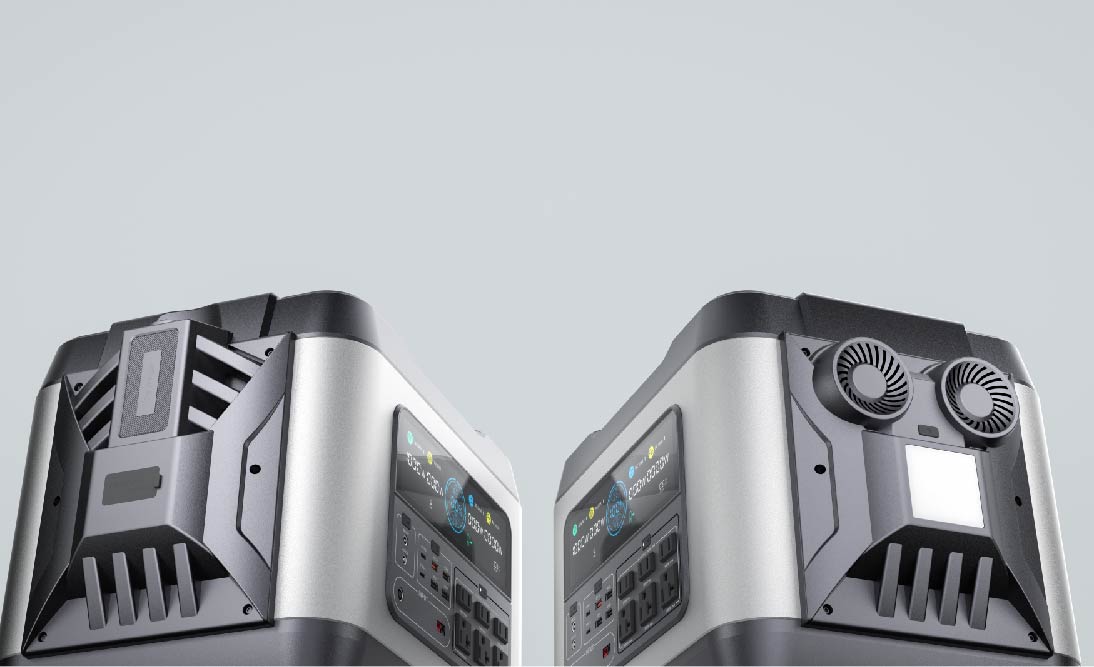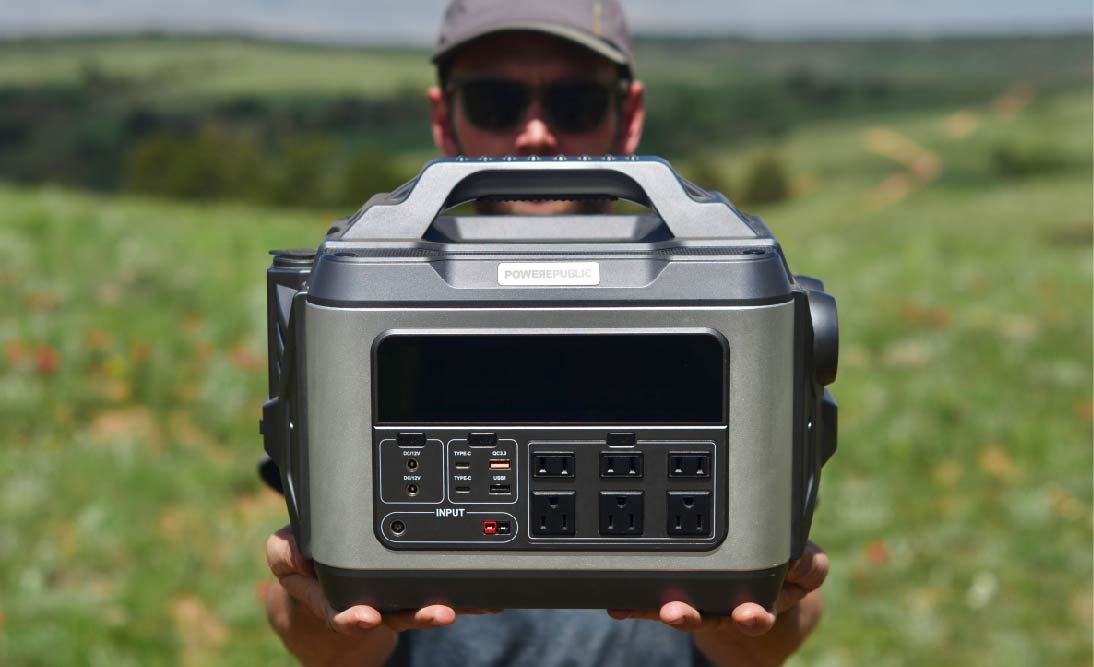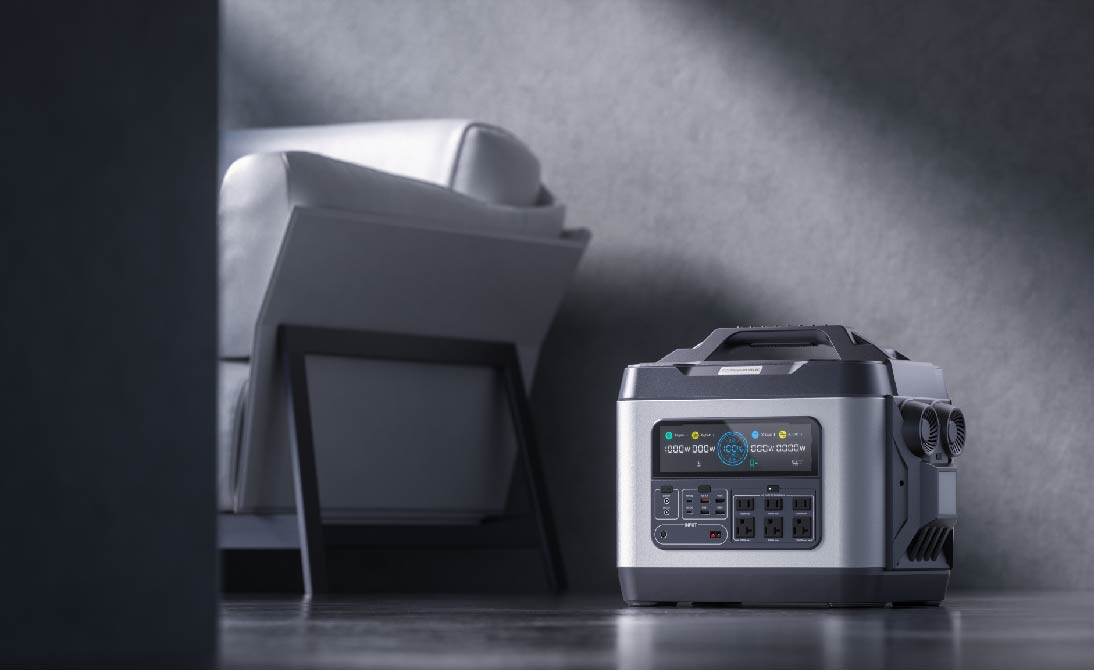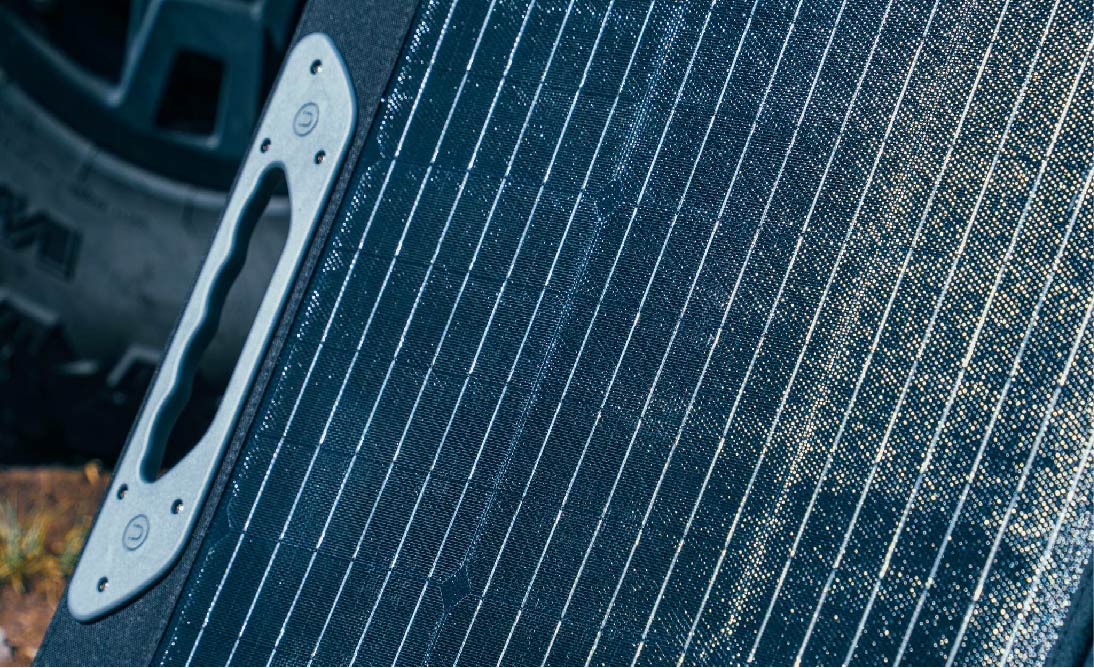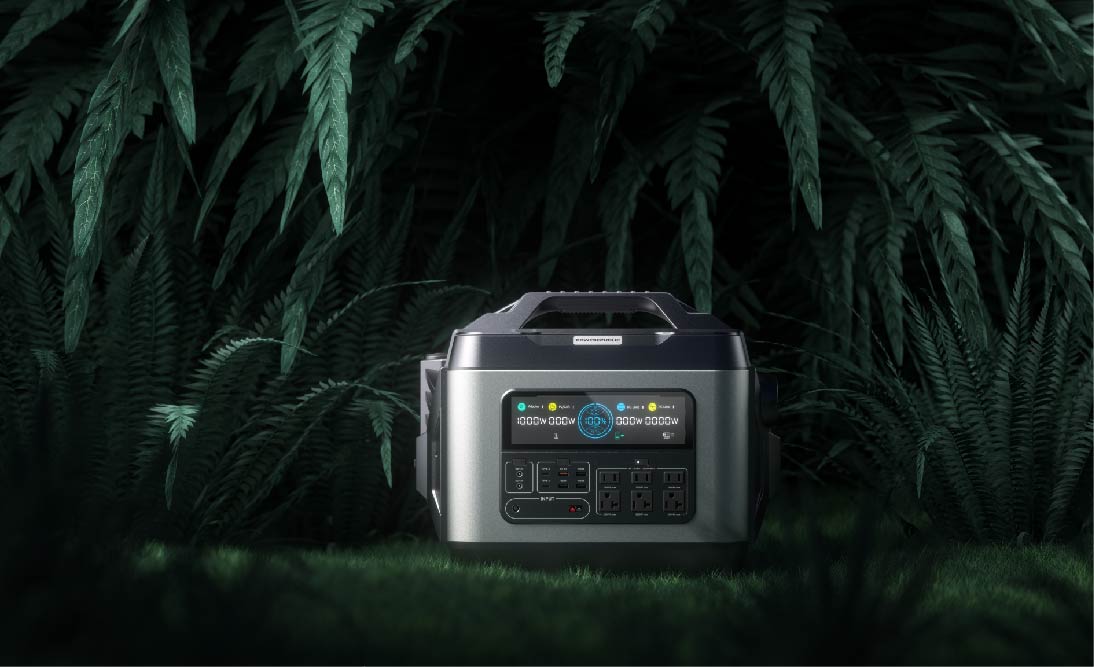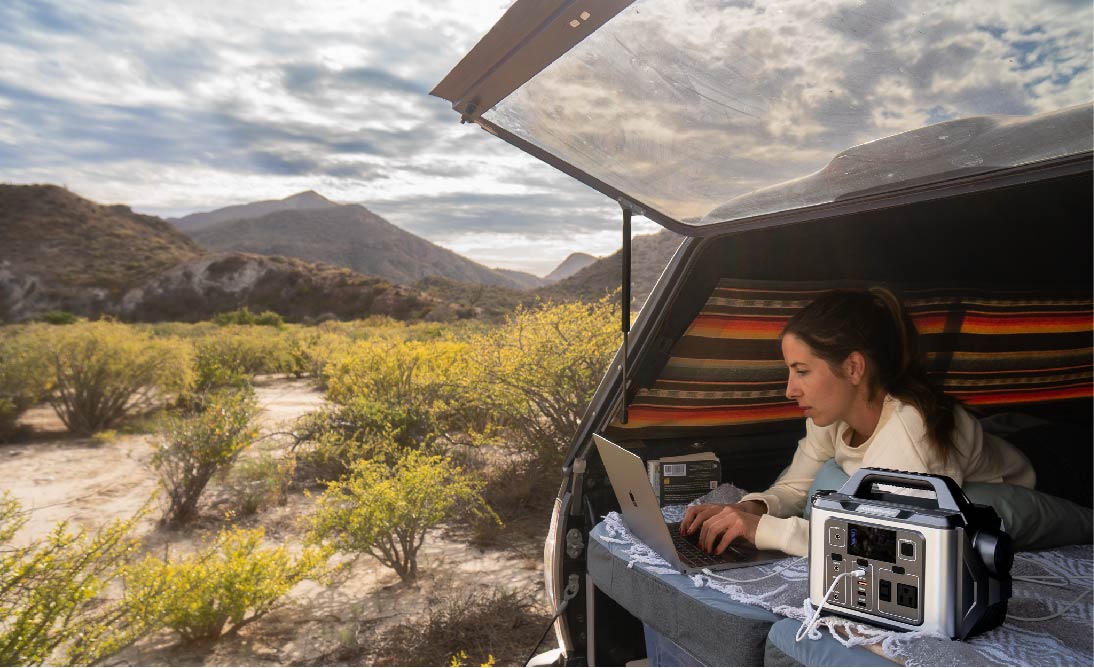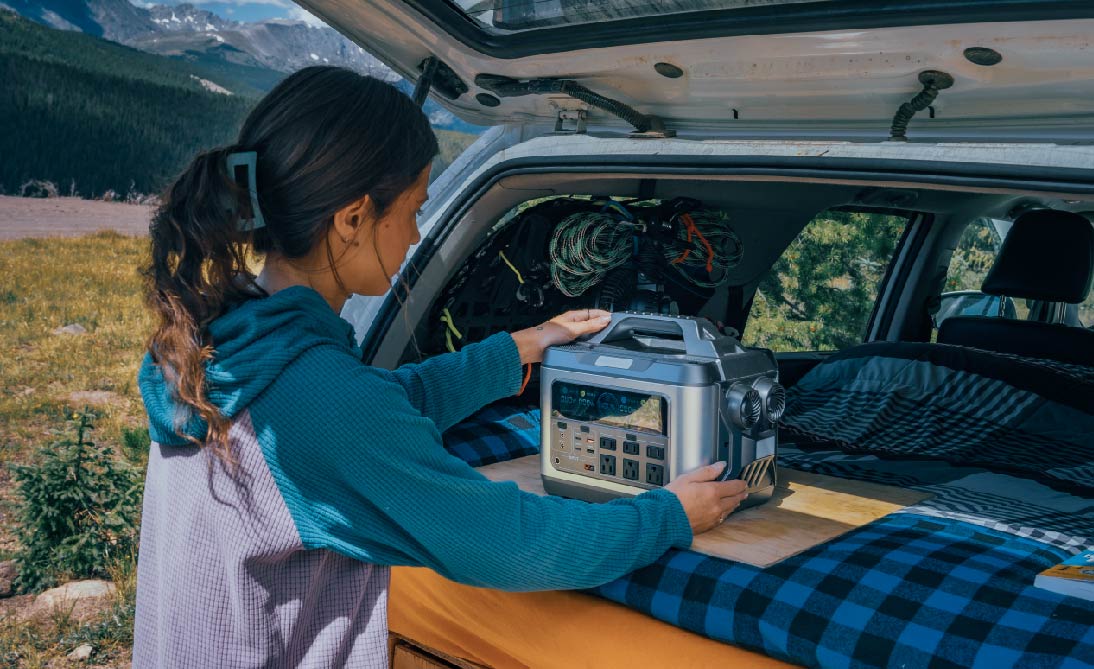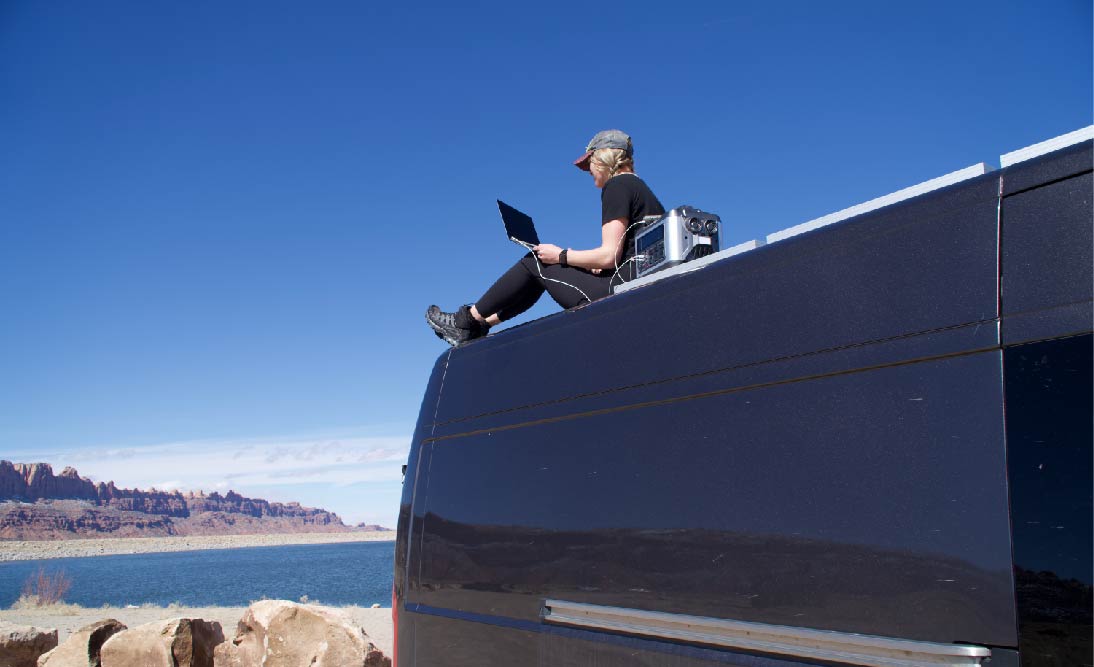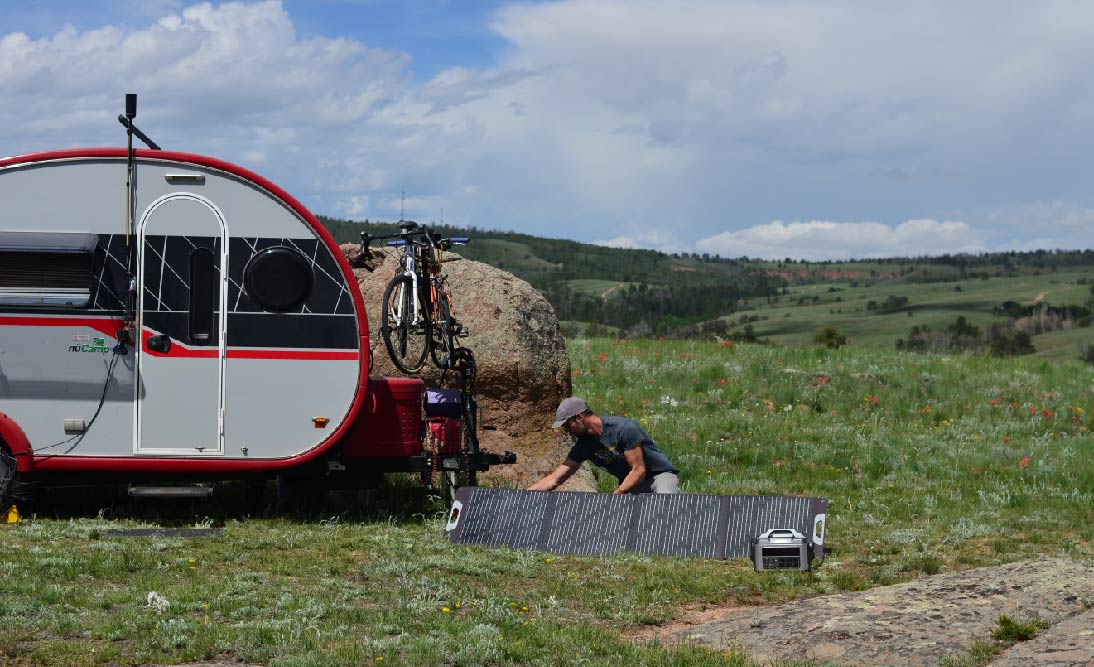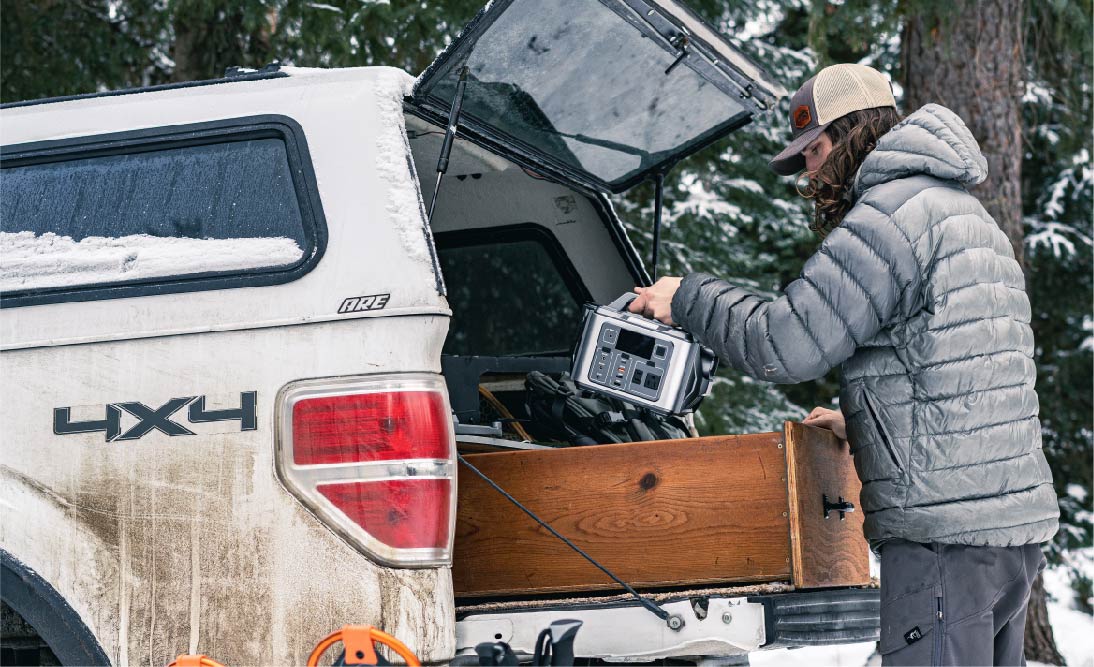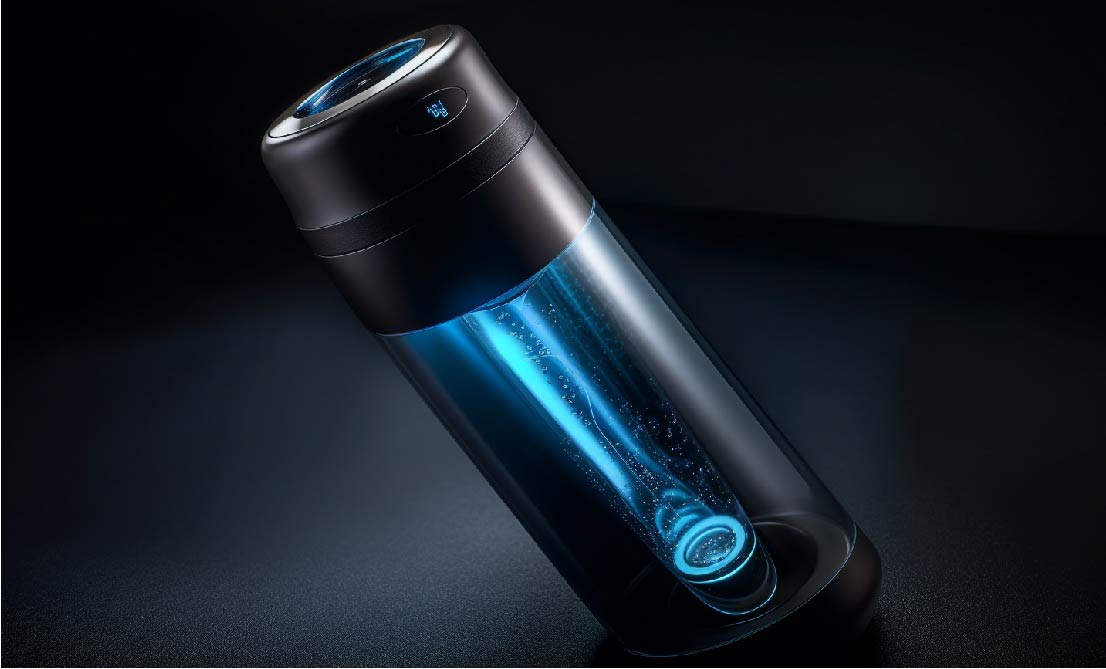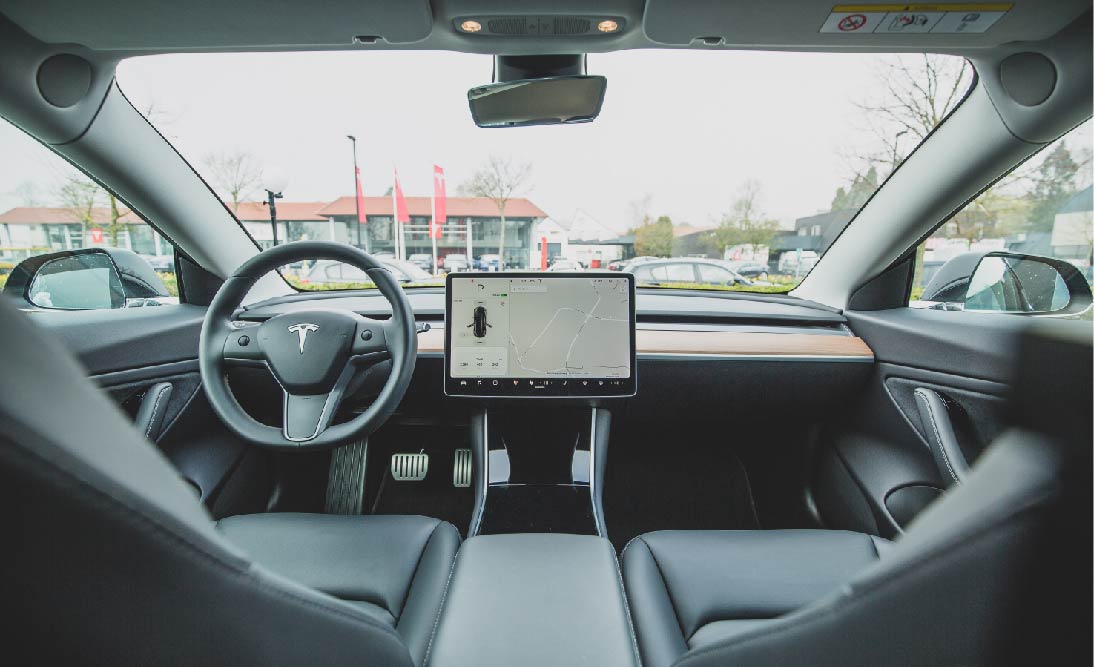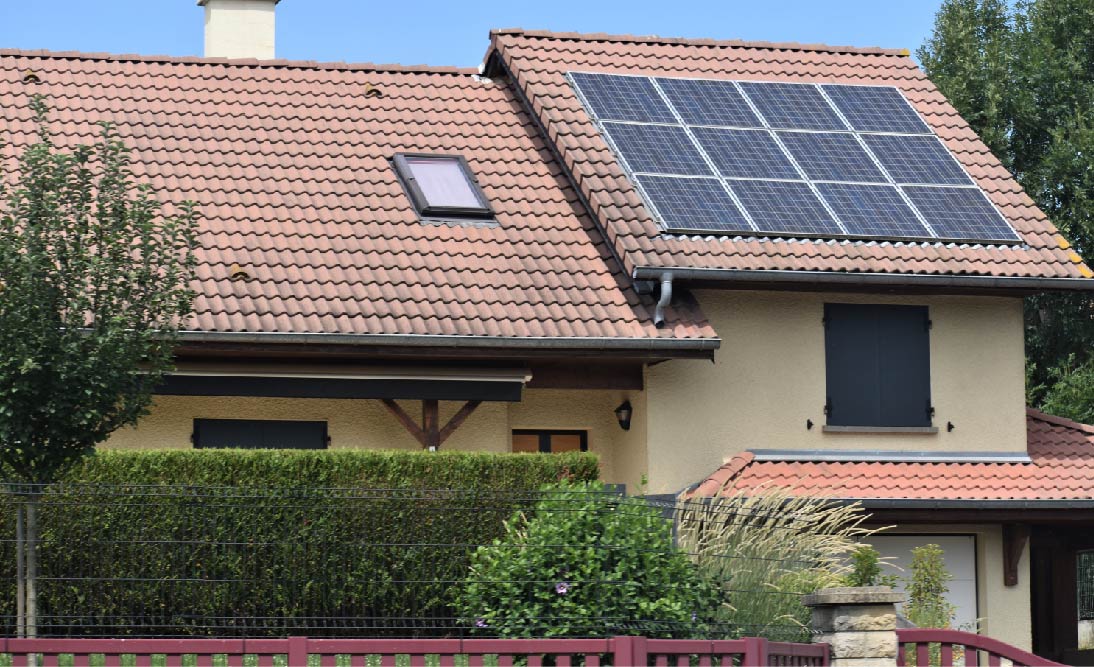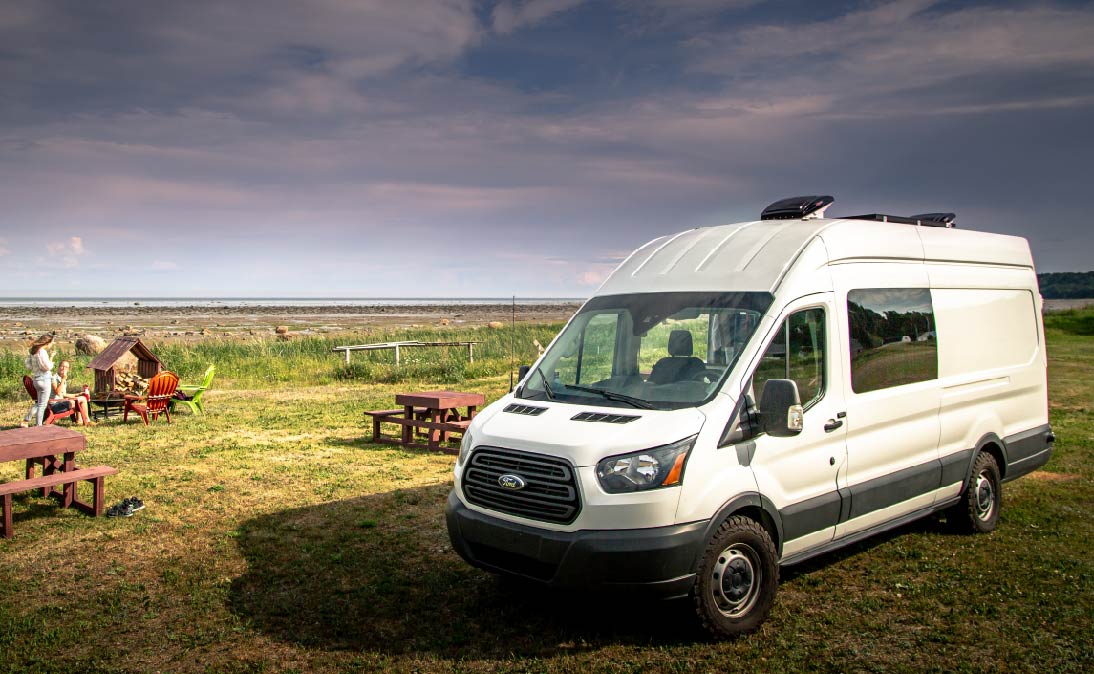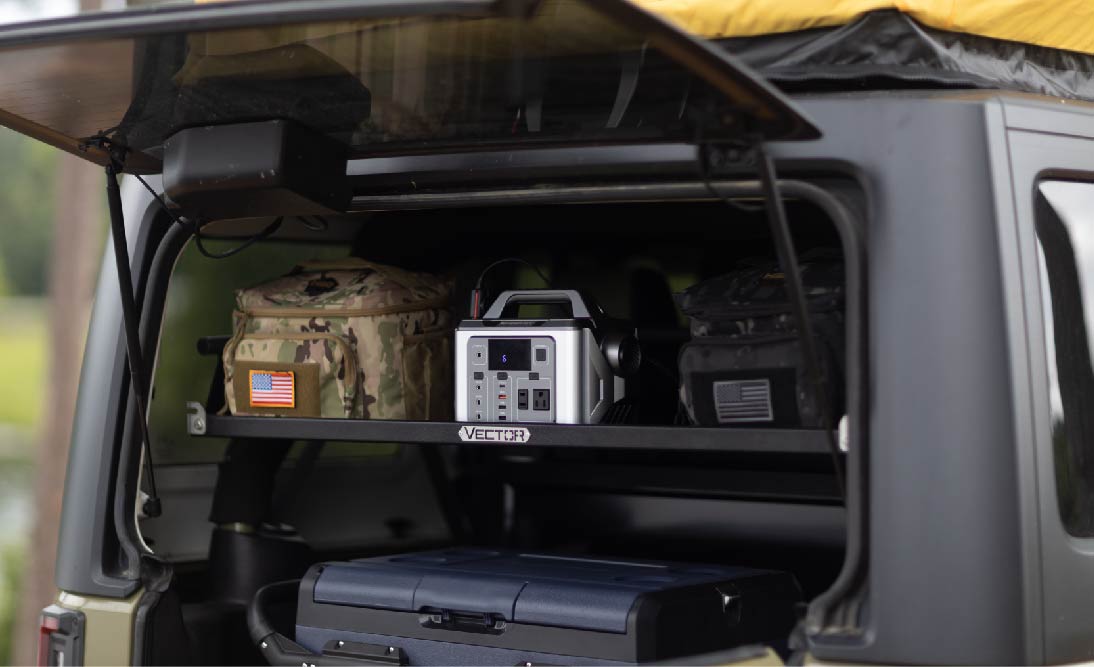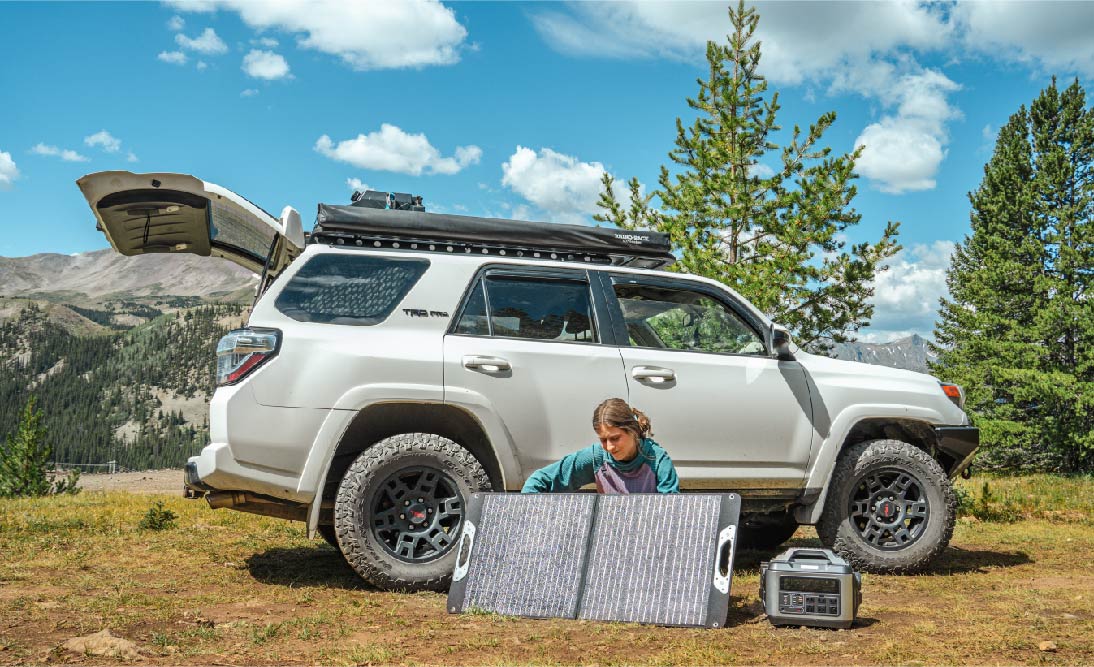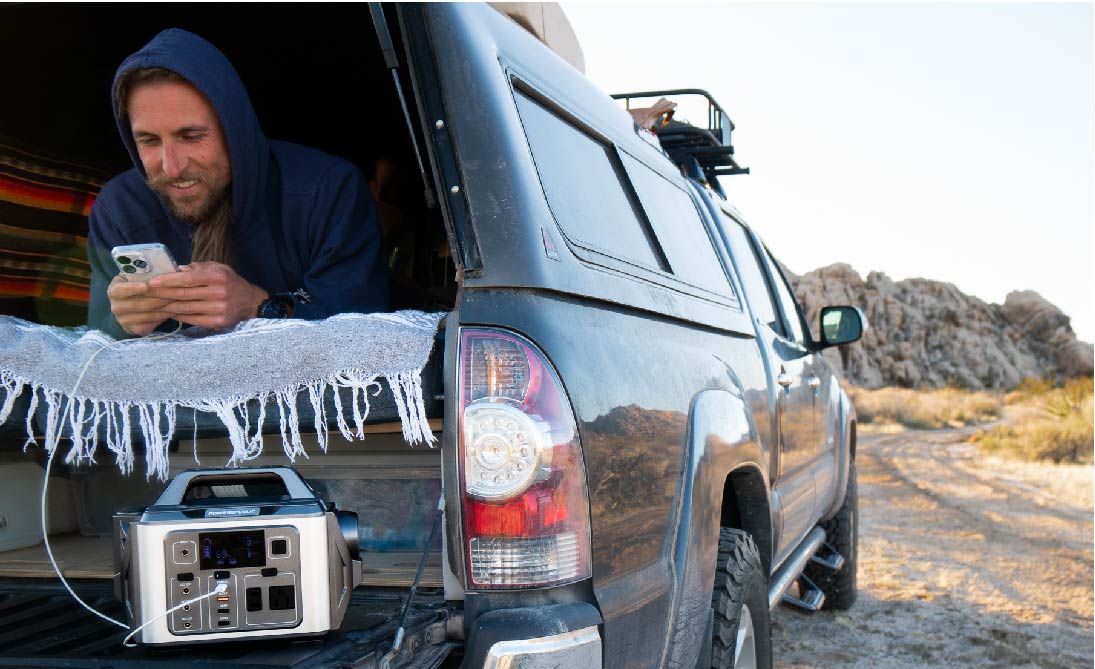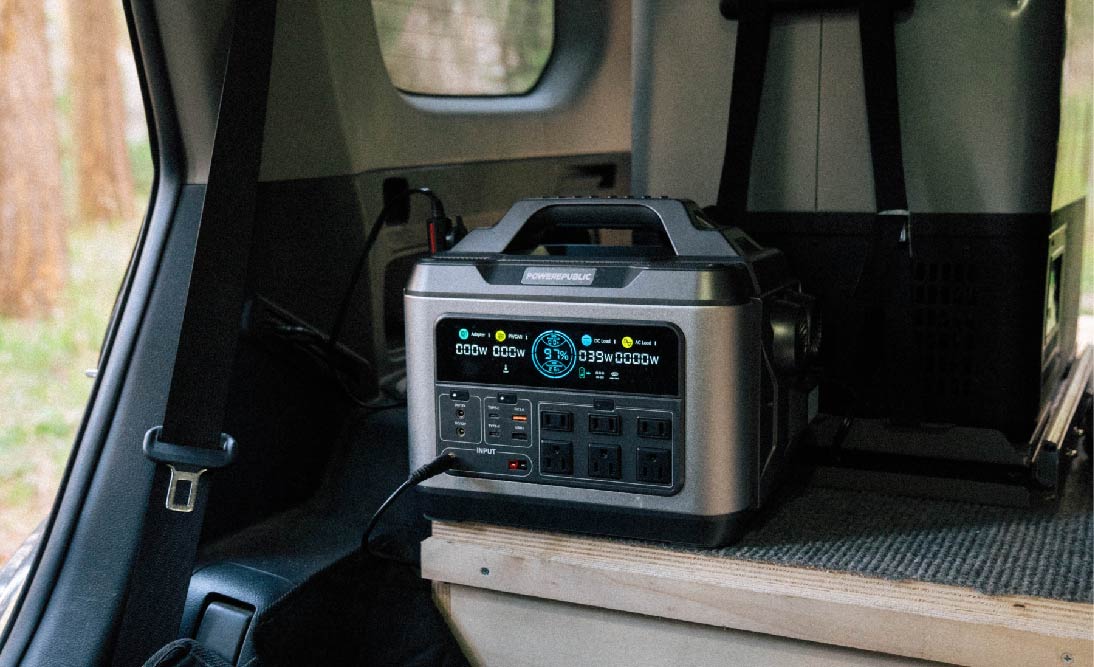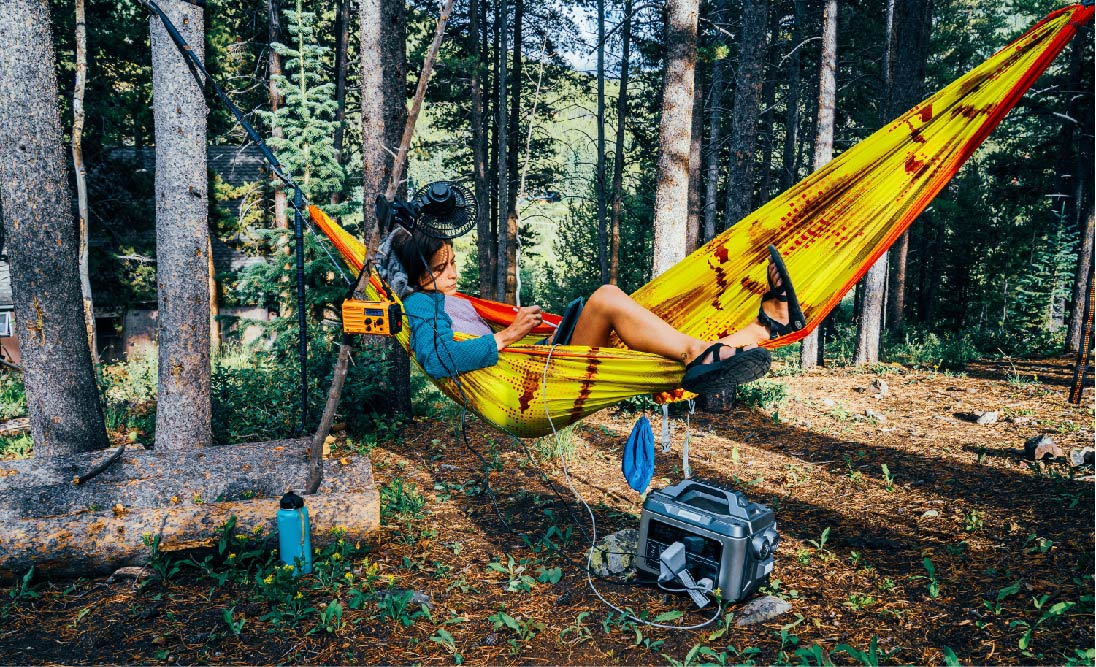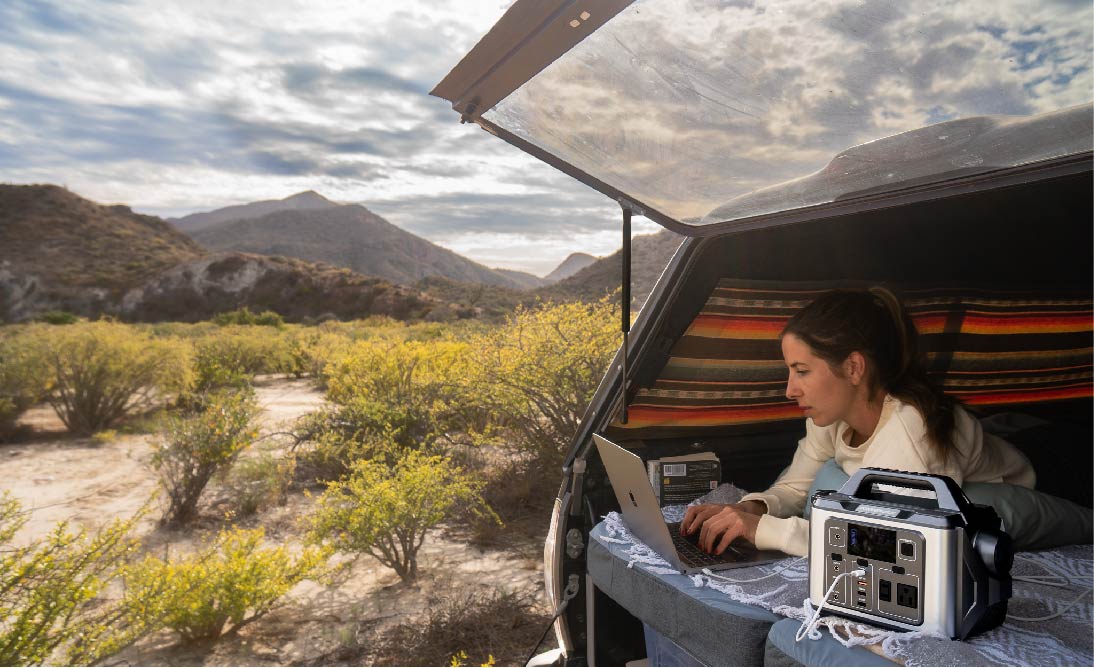Table of Contents:
-
Best Power Bank for Camping: What Features Should Campers Look For?
-
Best Power Bank for Camping: POWEREPUBLIC T306, T1200 and T2200 Models
-
FAQ III: Can I Use a Portable Power Station to Run a Refrigerator?
-
FAQ IV: If I Bring a CPAP Machine to the Campsite, What’s the Best Portable Power Station for It?
In the realm of outdoor adventures, one critical challenge that campers often face is maintaining a reliable power source. This is where the significance of finding the best power bank for camping comes into play. In remote camping areas, the luxury of electrical outlets fades into the wilderness, making it imperative to have a dependable power bank. Not only does it ensure your devices like smartphones, GPS units, and cameras stay charged, but it also plays a crucial role in safety and navigation. However, selecting the best power bank for camping is not a one-size-fits-all solution. It requires careful consideration of various factors such as capacity, durability, portability, and, importantly, the ability to withstand harsh outdoor conditions.
Whether it's for a weekend getaway or an extended off-grid excursion, the right power bank can be the lifeline that keeps your essential gadgets operational and enhances your camping experience. This guide delves into the essential aspects of choosing the ideal power bank for your camping needs, ensuring that you stay connected and safe in the great outdoors.
Let’s get started!
Why Do Campers Need a Power Bank for Camping?
A power bank is a portable device that stores electrical energy and can be used to charge electronic gadgets such as smartphones, tablets, cameras, and even some laptops. It typically consists of a battery in a compact, durable case with a circuit to control power flow. Power banks come in various sizes and capacities, measured in milliampere-hours (mAh), allowing users to choose one that best fits their needs.

Campers often need a power bank for camping for several reasons:
-
Device Charging: The most apparent reason is to keep electronic devices charged. In remote camping areas, access to electrical outlets is rare or nonexistent. A power bank ensures that campers can keep their smartphones, GPS devices, cameras, and other gadgets charged.
-
Safety and Communication: A charged phone or communication device is crucial for safety in the wilderness. It allows campers to call for help, check weather updates, or use GPS for navigation.
-
Convenience: Power banks provide the convenience of charging devices anytime and anywhere, which is especially useful for longer camping trips where access to power sources is limited.
-
Lighting and Other Accessories: Many camping gadgets like LED lanterns, flashlights, and even some electric camping stoves or heaters can be powered or charged via USB, which makes a power bank quite useful.
-
Photography and Entertainment: For those who like to capture their camping experiences or need entertainment during downtime, keeping cameras, drones, or portable speakers charged is essential.
-
Eco-Friendly and Quiet: Unlike gas-powered generators, power banks are eco-friendly and operate silently, maintaining the peace and tranquility of the camping environment.
Overall, a power bank is an essential tool for modern camping, ensuring that electronic devices remain operational, which enhances both the safety and enjoyment of the outdoor experience.
Are Portable Power Stations and Power Banks the Same Thing?
Portable power stations and power banks are both devices designed to store and provide electricity for charging various electronic gadgets, but they differ significantly in their capacity, size, and functionality.

Similarities:
-
Portable Energy Storage: Both devices store electrical energy for later use, making them convenient for situations where access to a power outlet is limited or unavailable.
-
Rechargeable: They can be recharged using a power source such as a wall outlet or, in some cases, solar panels.
-
Multiple Charging Ports: Many models of both power banks and portable power stations come with multiple ports to charge different devices simultaneously.
Differences:
-
Capacity and Power Output: Portable power stations have a much higher capacity and power output compared to power banks. They can power larger devices like laptops, mini-fridges, or even small appliances, while power banks are typically used for smaller devices like smartphones and tablets.
-
Size and Portability: Power banks are smaller, lighter, and more portable, designed for carrying in a bag or even a pocket. Portable power stations are larger and heavier, making them less portable but more suited for camping, road trips, or emergency power sources.
-
Additional Features: Portable power stations often come with additional features like an AC outlet, DC carport, or even solar charging capabilities. They may also have a display to show the remaining power or input/output information. Power banks, being simpler devices, usually lack these features.
-
Price: Due to their larger capacity and additional features, portable power stations are generally more expensive than power banks.
Overall, while both serve the purpose of portable power supply, portable power stations are more suited for high-power needs and longer-duration usage, whereas power banks are ideal for charging small devices on the go. Knowing this can help you distinguish them and make better decisions when choosing the best power bank for camping.
Best Power Bank for Camping: What Features Should Campers Look For?
When selecting the best power bank for camping, campers should consider several key features that cater to the unique demands of outdoor activities. Here's what to look for, along with examples and calculations to help make an informed decision:
Key Features to Look For in a Power Bank for Camping
High Capacity:
-
Why It Matters: A higher capacity means more charges for your devices. Capacity is measured in milliampere-hours (mAh).
-
Example: A power bank with 20,000 mAh can charge a smartphone with a 3,000 mAh battery approximately 6 times (20,000 / 3,000 = 6.67).
Durability and Weather Resistance:
-
Importance: Camping often involves exposure to harsh weather conditions, so a rugged, water-resistant power bank is essential.
-
Look For: IP ratings (e.g., IP67) indicate dust and water resistance.
Multiple Charging Ports:
-
Benefit: Allows charging multiple devices simultaneously.
-
Example: A power bank with 2 USB-A ports and 1 USB-C port can charge a phone, a camera, and a tablet at the same time.
Fast Charging Capabilities:
-
Advantage: Reduces the time needed to charge devices.
-
Specifications: Look for Quick Charge (QC) or USB Power Delivery (USB-PD) standards.
Solar Charging Option:
-
Why Useful: For extended camping trips, a solar charging feature provides an endless energy source.
-
Note: Solar charging is slower; it's more of a backup option.
Portability:
-
Consideration: The power bank should be lightweight and compact enough for easy carrying in a backpack.
-
Balance: Higher capacity units will be heavier, so find a balance between weight and power needs.
LED Indicators/Built-In Flashlight:
-
Functionality: LED indicators for battery level and a built-in flashlight can be very useful in outdoor settings.
Calculations for Estimating Needs
Estimate Your Daily Power Usage:
-
Example: Smartphone (3,000 mAh) + Camera (1,000 mAh) + Tablet (4,500 mAh) = 8,500 mAh per day.
Determine Capacity Needs:
-
For a 3-Day Trip: 8,500 mAh/day × 3 days = 25,500 mAh.
-
Choose a Power Bank: Select a power bank slightly above this capacity, say, 30,000 mAh, to ensure you have enough power, considering efficiency losses.

In short, choosing the best power bank for camping involves balancing capacity, durability, portability, and additional features like solar charging and fast charging capabilities. By carefully considering these aspects and estimating your power needs, you can select a power bank that reliably supports your devices throughout your camping adventure.
Best Power Bank for Camping: POWEREPUBLIC T306, T1200 and T2200 Models
We know that power banks are suitable for small electronic devices, whereas portable power stations are ideal for items with higher wattages. So, whether you're searching for the best power bank or portable power station for camping, POWEREPUBLIC has you covered! We offer three different models, T306, T1200, and T2200, ranging from 300W to 2200W, covering 95% of camping needs.

For a better comparison, please check out the table below to select the best power bank for your camping needs.
|
Features/Models |
|||
|
Capacity |
296Wh |
1110Wh |
2240Wh |
|
Running Power |
300W |
1200W |
2200W |
|
Surge Power |
600W |
2600W |
4500W |
|
Battery |
Lithium-Ion |
Lithium-Ion |
|
|
Protection |
BMS |
BMS |
BMS |
|
Output Ports |
10 |
13 |
15 |
|
Charging Methods |
AC Adapter, Solar Panel, Car Charger |
AC Adapter, Solar Panel, Car Charger |
AC Adapter, Solar Panel, Car Charger |
|
Weight |
9.2Ibs/4Kg |
31Ibs/14Kg |
64Ibs/29Kg |
|
Measurements |
11.2*6.1*8.0 inch |
14.3*9.3*10.6 Inch |
18.3*11.8*12.2 inch |
|
Est.Duration(h) |
Duration(h)=Capacity(Wh) * 0.85 / The power of the item(W) |
||
|
2.5 hours |
9.5 hours |
19 hours |
|
|
Refrigerator (200W) |
1.2 hours |
4.7 hours |
9.5 hours |
|
Freezer (150W) |
1.6 hours |
6.3 hours |
12.5 hours |
|
LED Light Bulb (10W) |
25 hours |
94 hours |
190 hours |
|
Smartphone Charger (15W) |
16.5 hours |
63 hours |
127 hours |
|
Laptop Charger (60W) |
4 hours |
15.5 hours |
31.5 hours |
|
Wi-Fi Router (70W) |
3.5 hours |
13.5 hours |
27 hours |
|
Microwave Oven (800W) |
Not Applicable |
1.2 hours |
2.4 hours |
|
Coffee Maker (1000W) |
Not Applicable |
1 hour |
2 hours |
|
Electric Kettle (1500W) |
Not Applicable |
Not Applicable |
1.3 hours |
|
Washing Machine (1500W) |
Not Applicable |
Not Applicable |
1.3 hours |
Note That:
-
You can check out POWEREPUBLIC's rating and reviews on Trustpilot(4.5).
-
The wattages of the items are estimated, so please refer to the user manual for more precise wattage information.
-
The operation time is calculated based on powering a single item when the models are at 100% battery level. In reality, you should check the state of the models, their continuous and starting power, how many items you want to power simultaneously, and the total power required to get a better estimation.
FAQ I: How Long Can I Use a Power Bank?
Answer: The lifespan of a power bank is determined by how long it can efficiently retain and provide power, usually rated in terms of charge cycles. A charge cycle is completed when you use 100% of the power bank’s capacity, but not necessarily in one go. For instance, using 50% of its capacity on two different occasions constitutes one full charge cycle.

Key Factors Influencing Lifespan:
-
Quality and Type of Battery: Higher-quality lithium-ion or LifePO4 batteries tend to have longer lifespans.
-
Number of Charge Cycles: Most power banks have a lifespan of about 300 to 500 charge cycles, meaning they can be charged from 0% to 100% and drained back to 0% that many times before their efficiency starts to diminish.
-
Usage Frequency: Regularly draining a power bank completely can shorten its lifespan.
-
Storage and Maintenance: Proper storage and maintenance, like avoiding extreme temperatures and keeping the power bank charged between 40% to 80%, can prolong its life.
Example Calculation:
-
If a power bank has a lifespan of 500 cycles and you use it to charge your phone (from 0% to 100%) every day, it would last for about 500 days or approximately 1.5 years before its capacity starts to significantly degrade.
Note: After reaching its maximum charge cycles, a power bank doesn't stop working abruptly but will gradually lose its capacity to hold a charge. So, it may still function but won't hold as much power as it did when new.
FAQ II: Are Power Banks Prohibited On an Airplane?
Answer: Power banks are generally allowed on airplanes, but there are restrictions. They must be carried in hand luggage, not checked baggage. The capacity limit is typically up to 100 watt-hours (Wh).
For power banks above 100 Wh and up to 160 Wh, airline approval is required. Power banks above 160 Wh are usually not allowed. The capacity in Wh is calculated by multiplying the mAh rating by the voltage (V) and dividing by 1,000.
Example:
-
Power Bank: 20,000 mAh at 5V
-
Calculation: 20,000*5/ 1,000= 100 Wh

FAQ III: Can I Use a Portable Power Station to Run a Refrigerator?
Answer: Yes, you can use a portable power station to run a refrigerator, but you need to ensure it has enough capacity and output. Refrigerators typically require between 100W to 800W, depending on size and model.
Example:
-
Portable Power Station: 500Whcapacity
-
Refrigerator: Needs 150W
-
Operation Time(hours)=PowerStation Capacity(Wh) * 0.85 / Refrigerator Wattage(W)
-
Approximate Operation Time: 500Wh*0.85/150W=33 hours

FAQ IV: If I Bring a CPAP Machine to the Campsite, What’s the Best Portable Power Station for It?
Answer: For a CPAP machine, you'll need a power station that can handle the machine's wattage and provide power throughout the night. CPAP machines typically use between 30W to 60W.
Example:
-
CPAP Usage: 8 hours per night, 50W
-
Required Capacity: 50W x 8 hours = 400Wh
-
Recommended Power Station: At least 500Wh to ensure a full night's use and account for power loss inefficiencies.
-
Choose a portable power station with a slightly higher capacity than your calculated needs to ensure reliability and longevity.

Final Thoughts
Choosing the best power bank for camping is essential for a seamless outdoor experience. POWEREPUBLIC's T306, T1200, and T2200 models, ranging from 300W to 2200W, cover a wide spectrum of camping needs, making them ideal for any outdoor enthusiast. These models stand out for their capacity to power everything from small gadgets to larger appliances, ensuring you stay connected and comfortable in the wilderness.
When selecting the best power bank or portable power station for camping, consider factors like capacity, durability, and additional features like solar charging. The best power bank for camping is one that offers a balance between portability and power, catering to both convenience and efficiency. With POWEREPUBLIC's range, you're equipped to face the challenges of outdoor adventures, ensuring your devices are always powered. Embrace your next camping trip with the confidence that your power needs are fully covered, enhancing both safety and enjoyment in the great outdoors.
Get your POWEREPUBLIC Portable Power Station Today for Your Next Camping Trip!
